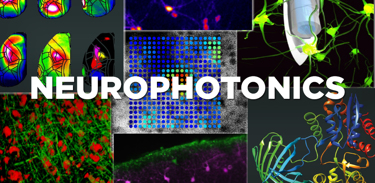SPIE Journal "Neurophotonics" Publishes Extensive Status Report On Tools For Brain Science

Together with a second, complementary status report anticipated later this year, “Neurophotonic tools for microscopic measurements and manipulation” features the “latest and greatest” optics and photonics technologies targeted to neuroscience. The pair of status reports offers what will be a cornerstone account of formidable recent achievements of the BRAIN Initiative and related large-scale neuroscience projects around the world. For experts, these publications offer a broad and inclusive overview of the diverse neurophotonic arena. For students, this invaluable and one-of-a-kind educational resource may influence their careers for years to come.
While this first report focuses on tools mostly applicable to animal studies — spanning the spatial scale from molecular nanoprobes to the mesoscale imaging of cortical columns and brain areas — the second report will focus on diffuse optical imaging methods applicable to noninvasive human studies.
Between them, these two standalone Neurophotonics publications introduce a wide spectrum of tools, describe the underlying principles of operation, sum up the current state of research within each domain, reflect on current limitations, and look ahead to the next five years of further development, improvement, and ways to overcome seemingly fundamental barriers.
"These epic reports reflect not only the recent acceleration of scientific progress in the neurophotonic arena that has been truly remarkable, but also the exceptional talent of the scientists driving this progress," says Neurophotonics Editor-in-Chief Anna Devor. "If you are not in the business of making tools for neuroscience, just look at the breathtaking images on the cover. Who wouldn't want to be part of this groundbreaking effort? Read the reports, get inspired, join the movement!"
Neurophotonics is an open access journal published by SPIE, the international society for optics and photonics, and available via the SPIE Digital Library. The journal covers advances in optical technology applicable to study of the brain and their impact on basic and clinical neuroscience applications.
About SPIE
SPIE, the international society for optics and photonics, brings engineers, scientists, students, and business professionals together to advance light-based science and technology. The Society, founded in 1955, connects and engages with our global constituency through industry-leading conferences and exhibitions; publications of conference proceedings, books, and journals in the SPIE Digital Library; and career-building opportunities. Over the past five years, SPIE has contributed more than $22 million to the international optics community through our advocacy and support, including scholarships, educational resources, travel grants, endowed gifts, and public-policy development. www.spie.org.
